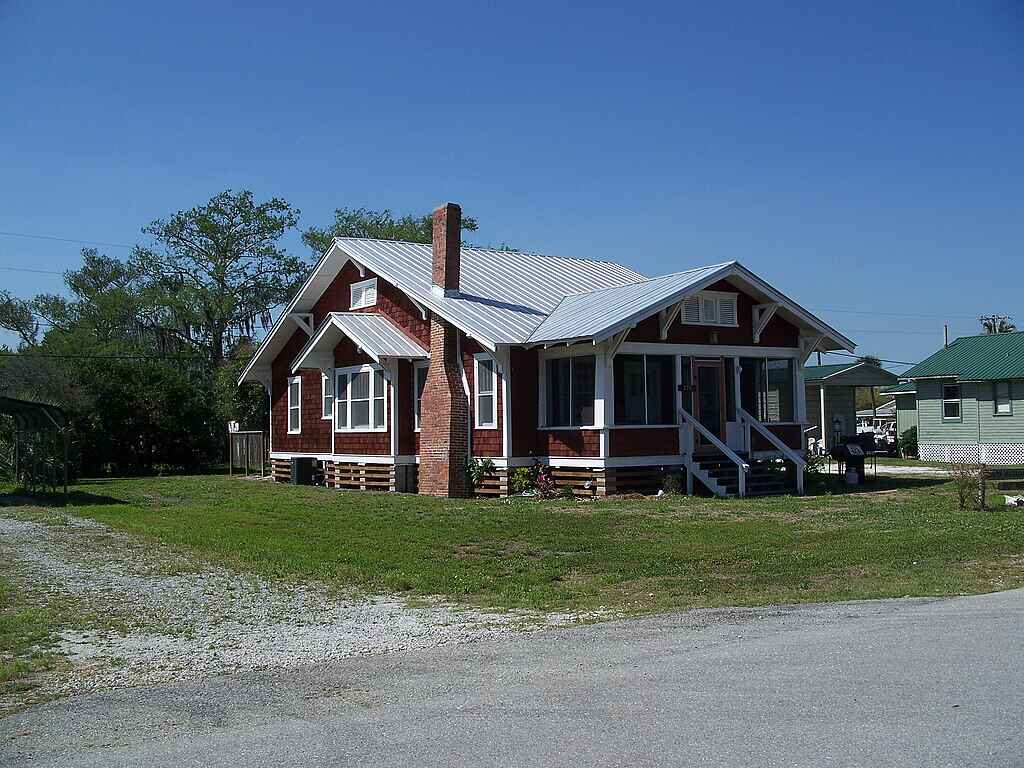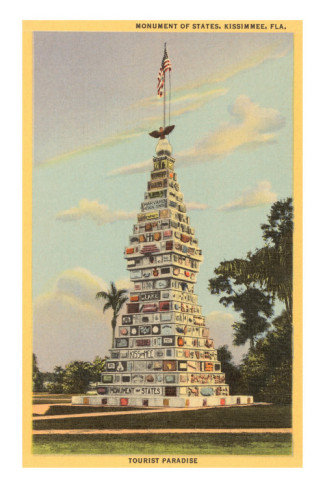- Home
- Florida History
- Florida Heritage Sites
- Moore Haven Residential Historic District
MOORE HAVEN RESIDENTIAL
HISTORIC DISTRICT
By Mike Miller April 28, 2025
OVERVIEW
The Moore Haven Residential Historic District was designated a U.S. historic district in 1998. It's a charming enclave in Moore Haven, Florida, showcasing the town’s early 20th-century heritage.
Bounded by Avenue J to Avenue M and 1st to 5th Streets, this 40-acre area preserves 40 historic buildings. These are primarily frame vernacular homes, reflecting the town’s boomtown era.
Located along the Caloosahatchee River near Lake Okeechobee, the district offers a quiet glimpse into the resilient spirit of a small Florida community.
HISTORICAL SIGNIFICANCE
Founded in 1915 by James A. Moore, Moore Haven flourished as a commercial hub, dubbed “Little Chicago” for its strategic location at the Caloosahatchee River and Lake Okeechobee junction.
The residential district, developed post-1915, housed workers and families tied to the town’s riverboat trade, cattle, and agriculture.
The 1926 Great Miami Hurricane and the catastrophic 1928 Okeechobee Hurricane, which killed thousands, devastated the area.
Still, many homes survived or were rebuilt, showcasing sturdy vernacular designs.
Marian Newhall Horwitz, elected mayor in 1917 as the first woman mayor south of the Mason-Dixon Line, lived nearby and spearheaded the town’s first railroad, arriving in 1918, boosting growth.
The district’s homes, some ramshackle, embody the town’s recovery from natural disasters and economic shifts.
VISITING DETAILS
Located in Moore Haven, FL 33471, the district is accessible via US 27, roughly equidistant from Fort Myers and West Palm Beach.
Open daily with no admission fee, it’s best explored on foot or by car, as there are no formal tours or staff.
Visitors should park near Avenue J and walk the grid between 1st and 5th Streets. Allow 45–60 minutes to view the homes, bringing water and sun protection due to limited shade.
Check the town’s website for local events like the Chalo Nitka Festival in March, which may offer context.
Nearby Lone Cypress Park complements the visit with river views. The district lacks restrooms, so plan accordingly.
INTERESTING FACTS
- The district’s homes, often elevated to withstand floods, feature simple designs with porches, reflecting practical pioneer aesthetics.
- The 1918 railroad, nicknamed “Hinky Dink,” was notoriously unreliable, with a local joke claiming a man aged decades waiting for it.
- The Westergaard House (1920) at 270 Avenue L Southwest, now the Glades County Historical Society headquarters, offers historical insights.
- Some homes may predate the 1926 hurricane, their weathered facades whispering survival tales.
- The district’s proximity to the Seminole Brighton Reservation adds cultural depth, with the Chalo Nitka Festival celebrating cowboy-Seminole ties.
CITY OF MOORE HAVEN WEBSITE
LOCATION MAP

Florida is the fastest-growing state in the United States and also the fastest-changing. If you see anything in this article that has changed or is in error, please let me know.
Thousands of Florida fans subscribe to our free daily Ezine, Florida Heritage Travel and we have 130,000 followers on Facebook.
By Mike Miller, Copyright 2009-2025
Florida-Back-Roads-Travel.com
Florida Back Roads Travel is not affiliated with or endorsed by Backroads, a California-based tour operator which arranges and conducts travel programs throughout the world.

